| From the campsite we set out north into Acadia starting with
the town of Opelousas. This unlikely looking building is actually the
tourist information centre. It is surrounded by other original buildings
which have been donated and moved to the site to create a tourist centre. It
actually looks no different to the others. | 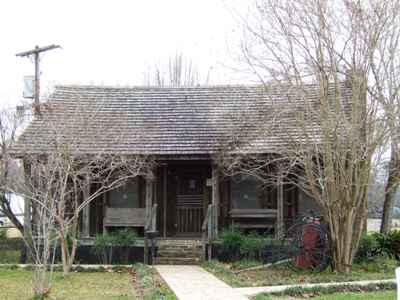 |
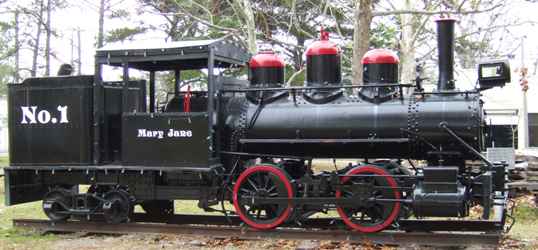 | In amongst the
buildings is this engine. There is no indication of what its connection
is but there is mention of a 'baby' train from New York. Perhaps worthy of
further research. |
| In the town is a museum which, like many of these 'historical'
museums, has an odd collection of disconnected things. One wall of a room
has this wall hanging map of the Civil War battles in the area. The floor
was covered with Christmas teddy bears... | 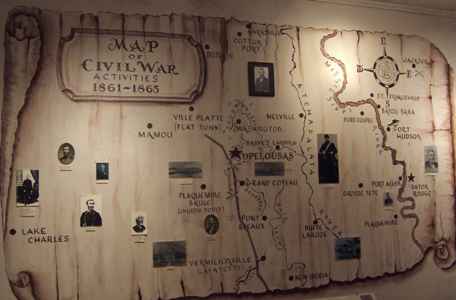 |
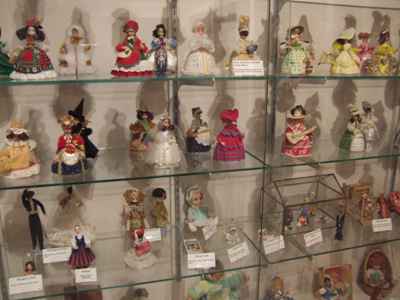 |
Next door is a doll collection. Some are factory made, some are hand made in
ways that my mother would have understood - styrofoam, pipe-cleaners, and
clothes pegs. |
| Some are more related to the area, like this
Huckleberry Finn doll. | 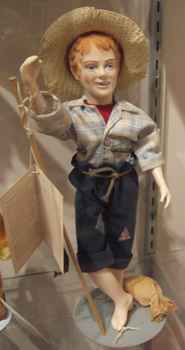 |
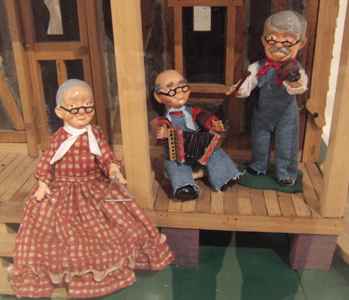 | There are
several doll's houses but this grouping leads in to the music of the area.
The local Indians could not pronounce l'Acadien so they corrupted it to
Cajun. |
| We moved on to Eunice, at the heart of Acadiana. Here we found
another museum with a number of traditional instruments like this German
button accordian which has become the mainstay of Cajun music. One was at
least 120 years old. | 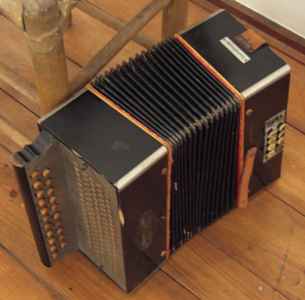 |
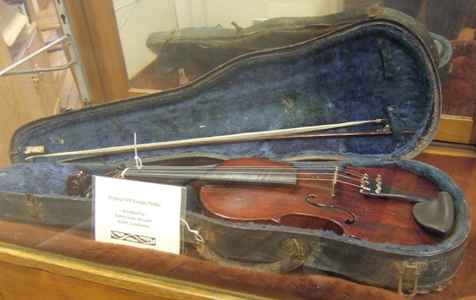 | The other
common instrument is the fiddle. This was once owned by a famous local
fiddler but the name didn't mean much to me. |
| There are other mementos of the area like this collection of
woodworking tools. This was one of the primary areas of expertise of the
folk who settled this area after they were expelled from Nova Scotia by the
English in 1755. | 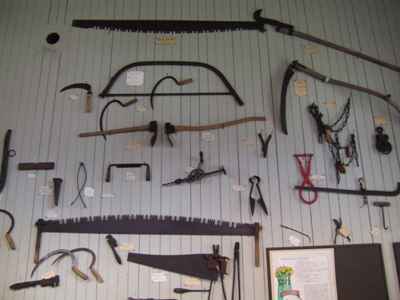 |
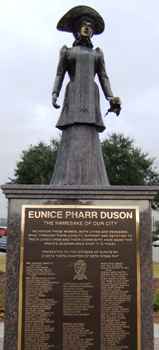 | Statues are
common in these towns, but statues of women are less common. This is a
statue of Eunice Duson, after whom this town was named. |
| We had based ourselves at a site just north of Lafayette. The
Acadiens were French Catholics in origin and were very religious. This is
the catholic Cathedral of St John the Evangelist. It is a very impressive
church in a more familiar style to us than the church buildings we had been
looking at throughout the south west. | 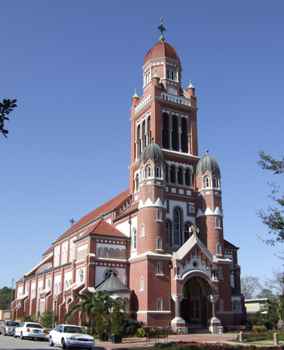 |
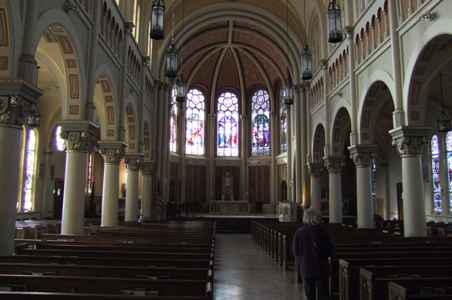 | It is equally
impressive on the inside, and most of the windows have extensive stained
glass. In Europe that would be a sign of wealth. Here in this relatively
modern building it is less clear. The site was donated for the church in
1824 but the church is much newer. |
| The Jean Lafitte National Historical Park and Preserve is the
only national park designed to preserve a cultural heritage in the US. It
has museums in a number of local towns. The one in Lafayette runs a film
explaining the expulsion of the Acadians from Nova Scotia and how they ended
up here in Louisiana. The display part includes these examples of the
typical clothes of the time. | 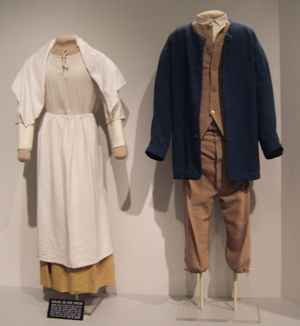 |
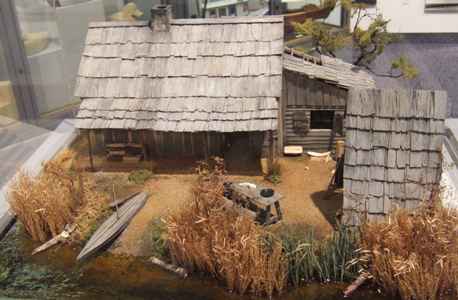 | There are
several models of the house styles of the various periods. This is a model
of the second generation 'post-in-the-ground' style of house probably dating
from the mid 1800s. This area didn't really join the 20th century until half
way through. The first main road giving access was built in 1970. |
| One corner of the museum is devoted to the music and the musical
instruments. Cajun originated with the white settlers. The similar but
rather more upbeat Zydeco comes more from the black community and has Creole
origins. | 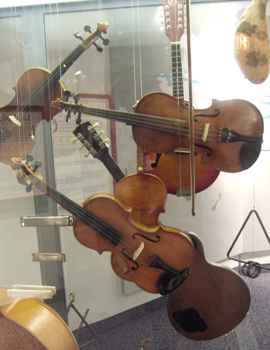 |
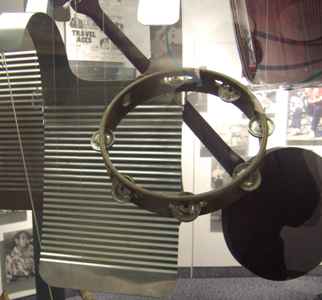 | They brought a
number of the simpler instruments, particularly the washboard. They are also
more inclined to use the banjo rather than the guitar. |
| Another old accordian is in the collection. These early
instruments are all German made. It was only after the war that local people
started to make their own accordians based upon German patterns, but there
is now quite a thriving local instrument making industry. | 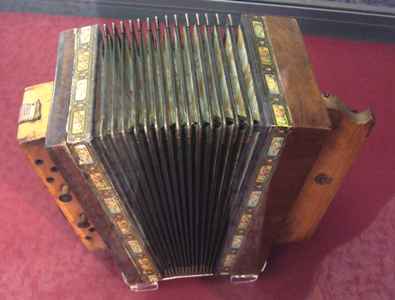 |
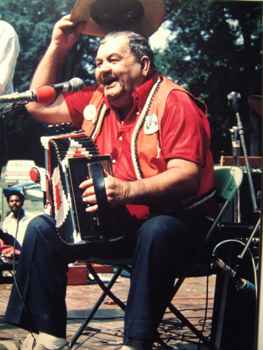 | As with many of
these 'folk' traditions, they are largely the province of the old, but they
tell me there are a number of young musicians who are starting to continue
the tradition. |
|